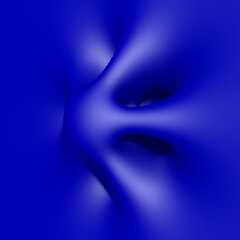 |
 |
|
 |
|
 |
|  |
|  |
|
 |
|
 |
|  |
|  |
|
 |
"jr" <cre### [at] gmail com> wrote:
> hi,
>
> "Adrien" <nomail@nomail> wrote:
> > > ...
> > Fantastic, thanks a lot ! ...
>
> great. (and, pleasure)
>
>
> > ... Thought I get an error from the +ac0.99 option, I'll try to figure out why.
>
> you do use a v3.8?
>
>
> regards, jr.
No 3.7, I had compiled 3.8 a while ago but it broke when I upgraded my distro.
Will compile again. com> wrote:
> hi,
>
> "Adrien" <nomail@nomail> wrote:
> > > ...
> > Fantastic, thanks a lot ! ...
>
> great. (and, pleasure)
>
>
> > ... Thought I get an error from the +ac0.99 option, I'll try to figure out why.
>
> you do use a v3.8?
>
>
> regards, jr.
No 3.7, I had compiled 3.8 a while ago but it broke when I upgraded my distro.
Will compile again.
Post a reply to this message
|
 |
|  |
|  |
|
 |
|
 |
|  |
|  |
|
 |
hi,
"Adrien" <nomail@nomail> wrote:
> No 3.7, I had compiled 3.8 a while ago but it broke when I upgraded my distro.
> Will compile again.
<https://github.com/POV-Ray/povray/tags>
regards, jr.
Post a reply to this message
|
 |
|  |
|  |
|
 |
From: Thomas de Groot
Subject: Re: Artifacts when tracing somewhat high degree poly
Date: 8 Dec 2022 08:06:07
Message: <6391e13f@news.povray.org>
|
|
 |
|  |
|  |
|
 |
Op 6-12-2022 om 10:03 schreef Adrien:
> Hi,
>
> I'm trying to use Povray to plot a surface defined by a polynomial equation
> spitted out by an auxiliary program. However, whenever the degree of that
> polynomial is 10 or more I get a bunch of artifacts/black dots. Is there a way
> to fix that ? Either directly in Povray, or in the auxiliary program ?
>
wrapping up my experiments, I think I got a acceptable solution for your
problem. Use the following additions/changes to your code (see attached
image):
//=====================================================
//+w640 +h640 +am3 +a0.01 +ac0.99 +r3 +bm2 +bs8
#version 3.8;
global_settings {
assumed_gamma 1.0
radiosity {
pretrace_start 16/max(image_width,image_height)
pretrace_end 4/max(image_width,image_height)
minimum_reuse 4/(max(image_width,image_height)-0.05)
#if (Stochastic)
count 10
#else
count 50, 1000
#end
nearest_count 20, 3
error_bound 1
recursion_limit 2
low_error_factor .3
gray_threshold 0.0
//minimum_reuse 0.015
maximum_reuse 0.1
brightness 1
adc_bailout 0.01/2
normal off
media off
always_sample off
//max_sample 1.0
}
}
light_source {
2*<5, 10, -40>
color White
area_light <5, 0, 0>, <0, 0, 5>, 5, 5
adaptive 2
area_illumination on
jitter
circular
orient
/*fade_power 1
fade_distance 30*/
}
//=====================================================
All the rest is unchanged. Whether radiosity is "necessary" here is a
matter of taste.
Very interesting poly btw...
--
Thomas
Post a reply to this message
Attachments:
Download 'adrien_poly.png' (176 KB)
Preview of image 'adrien_poly.png'

|
 |
|  |
|  |
|
 |
From: Thomas de Groot
Subject: Re: Artifacts when tracing somewhat high degree poly
Date: 8 Dec 2022 08:08:49
Message: <6391e1e1$1@news.povray.org>
|
|
 |
|  |
|  |
|
 |
I see I have forgotten to add:
#declare Stochastic = on;
before the global_settings block. Sorry.
--
Thomas
Post a reply to this message
|
 |
|  |
|  |
|
 |
From: Alain Martel
Subject: Re: Artifacts when tracing somewhat high degree poly
Date: 8 Dec 2022 13:56:18
Message: <63923352$1@news.povray.org>
|
|
 |
|  |
|  |
|
 |
Le 2022-12-08 à 08:06, Thomas de Groot a écrit :
light_source {
2*<5, 10, -40>
color White
area_light <5, 0, 0>, <0, 0, 5>, 5, 5
adaptive 2
area_illumination on
jitter
circular
orient
/*fade_power 1
fade_distance 30*/
}
Using adaptive 2 with that area_light is exactly the same as not using
it at all as the starting grid is 5x5.
For adaptive 2 to have any benefit, the grid need to be strictly larger
than 5 in at least one direction. So,
area_light <5, 0, 0>, <0, 0, 5>, 9, 9
or more.
Adaptive level, starting grid
0 2x2
1 3x3
2 5x5
3 9x9
Here is the formula to know the starting grid :
(adaptive level)^2 +1
Post a reply to this message
|
 |
|  |
|  |
|
 |
From: Thomas de Groot
Subject: Re: Artifacts when tracing somewhat high degree poly
Date: 9 Dec 2022 02:15:04
Message: <6392e078$1@news.povray.org>
|
|
 |
|  |
|  |
|
 |
Op 08/12/2022 om 19:56 schreef Alain Martel:
> Using adaptive 2 with that area_light is exactly the same as not using
> it at all as the starting grid is 5x5.
> For adaptive 2 to have any benefit, the grid need to be strictly larger
> than 5 in at least one direction. So,
> area_light <5, 0, 0>, <0, 0, 5>, 9, 9
> or more.
>
> Adaptive level, starting grid
> 0 2x2
> 1 3x3
> 2 5x5
> 3 9x9
> Here is the formula to know the starting grid :
> (adaptive level)^2 +1
Of course! My bad.
Thanks Alain. Always good to know someone is watching your back! ;-)
--
Thomas
Post a reply to this message
|
 |
|  |
|  |
|
 |
|
 |
|  |
|
 |




![]()